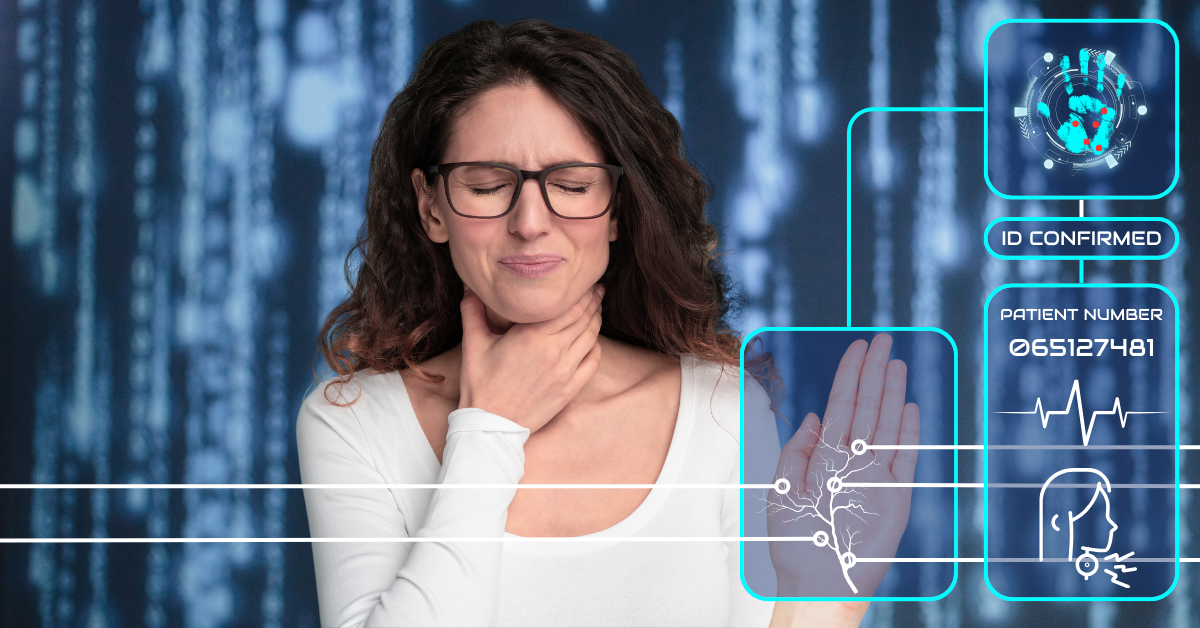Categories
In healthcare, where patient safety and data security are non-negotiable, palm vein healthcare technology is emerging as a powerful tool to protect patient identities. By using unique vein patterns beneath the skin, this biometric method ensures accurate identification, reducing errors and fraud.
This article explores the timeline of palm vein scanning technology, how it works, real-world examples of its use in healthcare, its benefits, challenges, and future trends in safeguarding patient identities.

Palm vein healthcare technology has evolved from a research concept to a widely adopted biometric solution, with significant milestones shaping its role in patient identification.
Palm vein scanning in healthcare leverages near-infrared light to capture the unique vein patterns in a patient’s palm, which are as distinctive as a retinal scan and far more complex than fingerprints.
A scanner emits harmless infrared light—similar to that in a TV remote—to detect blood flow, creating a digital template of the vein pattern, typically containing up to 5 million data points.
This template is encrypted and linked to a patient’s medical record in the healthcare provider’s system.
When a patient returns, they scan their palm, often alongside providing their date of birth, and the system matches the scan to their record in seconds, ensuring the right care is delivered to the right person.

Palm vein scanning for healthcare has been adopted globally, with numerous institutions using it to enhance patient safety and streamline operations.
Since 2014, CHS, now part of Atrium Health, has deployed palm vein scanning across its 40 hospitals and 900 clinics, enrolling over 96% of patients voluntarily. Using Imprivata’s PatientSecure, CHS reduced its duplicate medical record rate by 98%, ensuring accurate patient identification even in busy settings.
Since 2015, Samsung Medical Center in Seoul has integrated palm vein technology to authenticate patients at its outpatient clinics and emergency department, improving efficiency and reducing wait times by 20%, as reported by Fujitsu’s case studies, while enhancing security against medical record fraud.
The Keiyu Association’s Sapporo Hospital adopted palm vein scanning in 2020 to verify patients before surgeries, ensuring the correct patient undergoes the procedure by matching pre-registered vein patterns on the operation day.
By 2017, BayCare, a 14-hospital system, implemented palm vein scanning to link patients to their records, even if they used different names over time, eliminating mix-ups and reducing medical identity theft, as reported by HFMA.
Starting in 2012, Turkey’s Ministry of Health rolled out a nationwide palm vein technology system for the SSI, deploying over 10,000 units across hospitals and pharmacies to prevent billing fraud through the MEDULA system, ensuring accurate patient authentication.
In 2009, El Camino became one of the first U.S. hospitals to use Fujitsu’s PalmSecure for patient registration, linking patients to their medical records to prevent errors and identity theft, as noted in Clinfowiki.
Palm vein scanning in healthcare offers a range of advantages that make it a standout biometric solution. Its accuracy is unmatched, with a false acceptance rate as low as 0.00008%, according to Fujitsu studies, ensuring patients are correctly identified even in high-volume settings like emergency rooms. The non-contact nature of the technology—patients simply hover their hand over the scanner—makes it hygienic, a critical feature in healthcare settings where infection control is paramount.
Additionally, palm vein patterns remain stable throughout a person’s life and are unaffected by external factors like skin injuries or burns, unlike fingerprints, making it reliable for all demographics, including children and the elderly. By reducing duplicate records and fraud, it also streamlines revenue cycle management, saving hospitals millions annually in denied claims due to misidentification.
Pro Recommendation: Check out our Palm Vein Recognition: Lighting and Placement Tips
While palm vein in healthcare offers significant benefits, its adoption faces several hurdles that can impact its effectiveness, each with actionable solutions to ensure broader implementation and patient trust.
Challenge: The initial expense of palm vein scanners and their integration with existing healthcare systems can be prohibitive, especially for smaller facilities with limited budgets, posing a barrier to widespread adoption.
Solution: Hospitals can explore phased rollouts, starting with high-traffic departments like emergency rooms, and leverage government grants or partnerships with vendors like Qube Bio, who often provide scalable pricing models.
Challenge: Storing biometric data, even when encrypted, sparks fears among patients about potential data breaches, with risks of identity theft if databases are hacked, a concern highlighted by OmniDefend in 2024.
Solution: Healthcare providers can enhance security by adopting advanced encryption standards and decentralized storage, while educating patients on data protection measures, as BayCare did through community health fairs, boosting acceptance rates.
Challenge: Unlike fingerprints, palm vein recognition lacks universal protocols, leading to interoperability issues between systems or vendors, which can complicate data sharing, as noted by Aratek in 2023.
Solution: Industry stakeholders can collaborate to establish global standards for palm vein data formats, similar to fingerprint standards, with initiatives like the International Biometric Group’s frameworks paving the way for interoperability.
Challenge: Some patients resist palm vein scanning due to “Big Brother” perceptions of biometric surveillance, fearing misuse of their data, which can slow adoption in healthcare settings.
Solution: Hospitals can launch transparent communication campaigns, as BayCare did with its 50+ community health fairs, explaining how palm vein recognition enhances safety and privacy, while offering opt-in policies to build trust and encourage participation.
The future of palm vein in healthcare looks promising as technology advances and adoption grows.
Palm vein scanners could be embedded in wearable devices, allowing patients to authenticate themselves for telehealth appointments or access medical records on the go, enhancing convenience and security.
AI algorithms could further improve matching accuracy, especially for low-quality scans, by analyzing patterns more effectively, potentially reducing false rejections in busy hospital settings.
Following Turkey’s model, more countries may implement nationwide palm vein healthcare systems to combat fraud and improve care, especially in regions with high rates of medical identity theft.
Hospitals may increasingly use palm vein scanning in self-service kiosks for check-ins, bill payments, and record access, improving patient satisfaction and reducing staff workload, as pioneered by Vecna and Fujitsu at HIMSS 2014.
Palm vein healthcare technology is transforming patient identification in 2025, as seen in implementations from Carolinas HealthCare to Turkey’s SSI, ensuring safety and reducing fraud. While challenges like cost and privacy concerns remain, its accuracy and hygienic nature make it a vital tool. As innovations like AI and wearables emerge, palm vein scanning will likely become a cornerstone of secure, efficient healthcare delivery, protecting patient identities in an increasingly digital world.
If you need help with your biometrics rollout, QUBE Bio are here to help!